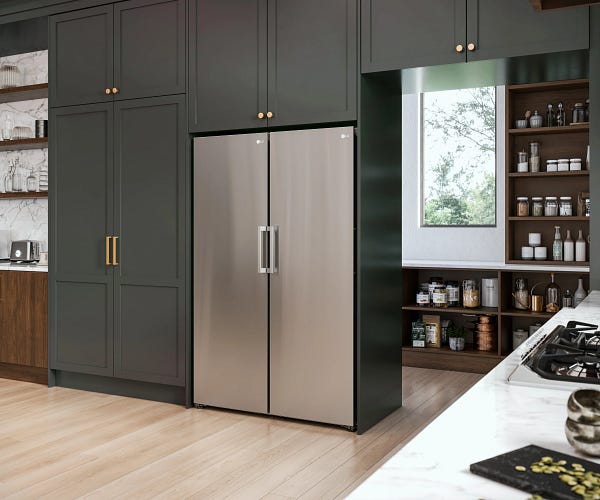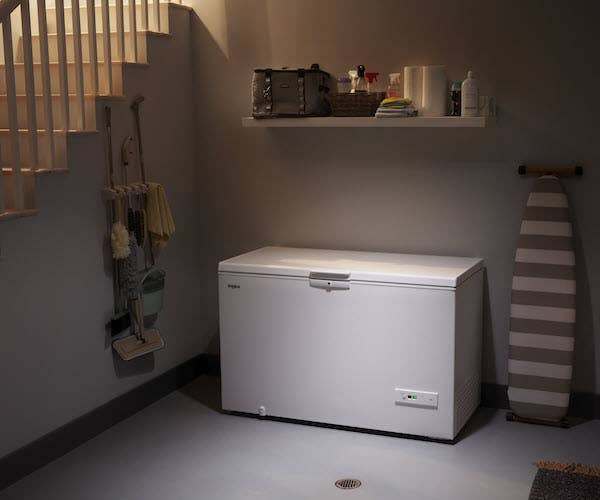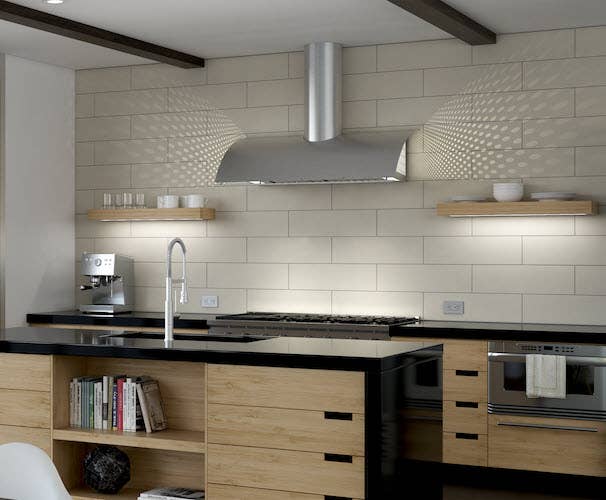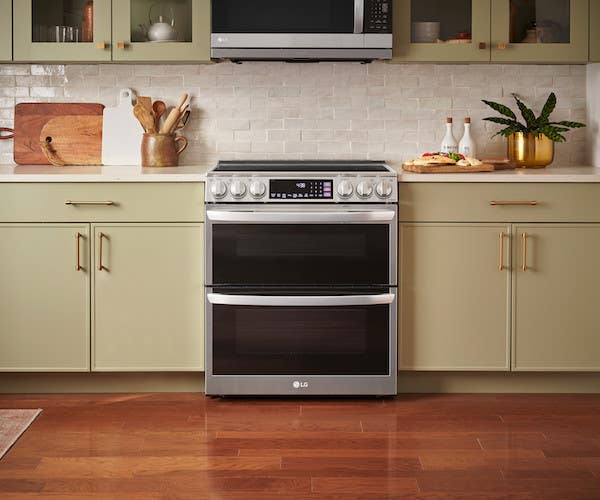Maytag offers a line of ventilation products to keep smoke, steam and odours from damaging parts of your home and decreasing its air quality. Learn more here
A GUIDE TO VENTILATION PRODUCTS: WHAT TO CONSIDER WHEN VENTILATION SHOPPING
Ventilation plays a crucial role in maintaining and improving the air quality in a kitchen. With the help of a ventilation product installed in your kitchen, cooking by-products like smoke, steam and odours are removed and filtered before they have the chance to damage cabinets, countertops or even fabric in other rooms of your home.
Here are the most important elements to think about when browsing for ventilation.
COMPARING NON-VENTED AND VENTED OPTIONS
Non-Vented Recirculation* can be a good choice for installation environments where exhaust isn't an option or scenarios where whole home circulation is already provided. The purpose of recirculating kits is to capture smoke, steam and cooking odours, filtering them before they re-enter the home.
* where permissible by code. Canadian building codes include requirements for air quality such as ASHRAE 62 “Ventilation for Acceptable Indoor Air Quality". Consult local building code requirements prior to installation of ventilation equipment to determine applicable permits venting conditions and air exchange requirements. Maytag products are certified to HVI 915 and 916 in accordance with 9.32.3.10 of Canada's NBC'15.
VENTED EXHAUST
This type of exhaust suctions smoke, steam and odours, bringing them outside the home. Please note that most ventilation products have an exterior venting option as it’s a common type of venting in the market.
Maytag offers options for both non-vented and vented exhausts.
UNDERSTANDING THE VENTILATION POWER REQUIRED (CFM)*
Vent power is measured in cubic feet per minute (CFM). This measure the velocity at which air flows into or out of the space. Certain manufacturers include the certified ratings to HVI 916* Airflow Test Procedure or AHAM HRH-2-2019** Standards as part of their CFM rating.
*Home Ventilation Institute (HVI)
**Association of Home Appliance Manufacturers "
*HOME VENTILATION INSTITUTE (HVI)
Being HVI certified means that the air flow (CFM rate) and noise level (sones) have undergone testing to see if it will perform as stated under the rated conditions.
If you notice that a vent product is HVI certified, go to the HVI website (www.hvi.org) to learn about what this means and how that product might withstand a specific type of installation with respect to duct configuration, certain speed settings and potentially more.
**ASSOCIATION OF HOME APPLIANCE MANUFACTURERS (AHAM)
Being AHAM Verified means that an impartial verification of both the manufacturer’s air flow (CFM) and noise level (sones) under an assortment of installation scenarios has been performed on a ventilation product. If you're curious if the vent you want to purchase has been AHAM Verified, go to the AHAM Certification Program website (www.aham.org) to learn more about the results.*https://www.aham.org/
CHOOSING THE RIGHT CFM
You should select an appropriately sized ventilation unit that features the proper CFM level. The reason for this is that a too-low CFM rating may not be adequate enough to clear the air from the kitchen. If the CFM is too high, it can create what is known as negative pressure, meaning another method must be implemented to replenish the air. If the CFM is too high, air can be removed from places like attics or crawl spaces.
You need to figure out what the minimum CFM requirements are for your space. Consider a variety of factors including what cooking techniques you use most often. If you are prone to searing, blackening and frying or find yourself using 4 or more burners a higher CFM rating may be required to refresh the air. Another thing to note is that the higher the CFM, the more noise a hood will produce. If the meals you most often make involve simmering and sautéing or you usually use only a couple of burners, a lower CFM rating should suffice.
Unfortunately, manufacturers do not always publish a BTU threshold. You can calculate the CFM required manually. If you tend to use every burner and enjoy cooking at high heat, divide total BTUs by 100.
Induction & Radiant Cooking Surfaces
These surfaces produce far less heat than gas alternatives. Due to this, these cooking surfaces should have 200 - 400 CFM. This is based on how many burners there are and the power. Radiant and Induction cooking surfaces should accompany ventilation of the same width.


*ADDITIONAL NOTE: Always review building codes as they offer the necessary makeup air provisions for ventilation products. CFM requirements for specific ventilation products are determined based on two factors: the location and installation method. Your City Bylaws are the best place to find this information. Also, speak to your HVAC professional to get the exact requirements specfic to your area.
WHY ARE SOUND LEVELS IMPORTANT?
The sound level ratings for ventilation products are important to consider early in your shopping process. Loudness is measured in sones. A sone is a single unit of noise as perceived by a person with regular hearing. A lower sones rating means a ventilation product will operate more quietly than one with a higher sones rating. If your home is spacious with open sightlines you might want to lean toward quieter appliances. Please note that sound requirements are also part of Canada’s National Building Code.
Maytag ventilation products are tested, certified and labelled in accordance with HVI 915 Loudness Testing and Rating Procedure.
Product CFM and sounds levels are verified in accordance with HVI 920 - 2015 through the AHAM Kitchen Range Hood Certification Program.*


CONSIDER SIZE AND CAPTURE AREA
"Most people are unfamiliar with a vent's capture area and it's importance. This is the outermost perimeter of the hood bottom where cooking by-products are captured. You should purchase a hood with a capture area to match your cooking appliance. The width of the capture area should be equal, if not larger, than a cooking appliance.
Maytag ventilation products are available in 24”, 30” and 36”."


Wall Mount Ventilation
A popular option is to install your cooking surface against a wall. In this installation scenario, the hood is attached to the wall, allowing air to be vented outside the home. When external venting isn't viable for a wall mount vent, you can purchase a recirculating kit


Under Cabinet Ventilation
These types of hoods are situated below the cabinet space right above the cooking surface and up against the wall. Certain under cabinet ventilation offer the ability to slide out over the cooking surface giving your kitchen a more streamlined look.


Telescoping Downdraft Ventilation
Achieve a streamlined look by installing this type of ventilation behind a cooktop and into a counter. Press a button to either make the slim exhaust fan rise from the counter when needed or to retract after use.


Microwave Hood Combinations (MHCs)
This combination of a microwave with a built-in ventilation system can free up valuable counter space. They are installed against an overhead cabinet and a wall and can be either recirculating or vented..
Custom Ventilation
Ventilation system is mounted on the inside of a custom cover that can be made of either metal, wood, plaster or tile. Customers will also have the choice of motors based on how much ventilation power they need. Blowers and hood liners can be installed against a wall and inside a cabinet.
Choose from two types of blowers:
In-line blowers are an interesting option because they are often installed in the attic. They are equipped with the same motor as many internal hood blowers because noise isn't a concern since they are situated a fair distance from a kitchen.
Internal blowers are placed directly over a cooking space. They are considered to be easy to maintain as the blower is accessible.
Hood liners with overhead lighting and the ability to trap grease are also available.
Maytag offers the all of the above configurations except telescoping downdraft ventilation.


FEATURES TO ENHANCE COOKING
Perimeter Venting
This feature improves suction by concentrating the airflow similar to a vacuum cleaner’s crevice attachment. Air picks up speed as it is pulled through the narrow slots around the ventilation hood’s perimetric cover. Air is then passed through grease filters to remove steam, smoke and grease before it is expelled from the kitchen.


Auto Speed Setting
Auto speed setting is a feature that automatically makes adjustments to the blower motor speed to match the ventilation with the heat output of the cooking surface.
INSTALLATION METHOD
"Before you decide on a vent, you must consider duct size. Popular sizes include 3 ¼” x 10” rectangular and 6”, 7”, or 10” round. Many vents can accommodate these sizes. Installation heights typically range between 24"" and 36” depending on the model. Refer to the installation guide for more details prior to starting.
If your ceilings are 8ft or higher, you may require a duct extension kit to increase the duct size so that it can vent to the exterior of the home. Kits that come with vents usually only accommodate 8ft ceilings.
The manufacturers guide is your best source for all installation requirements. "






